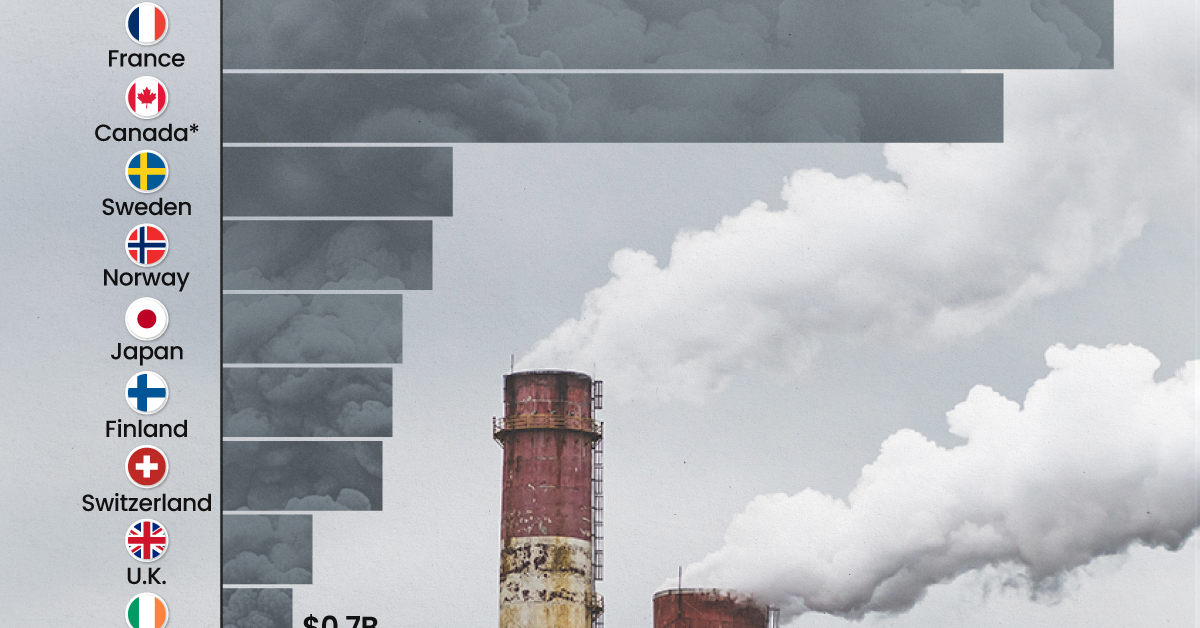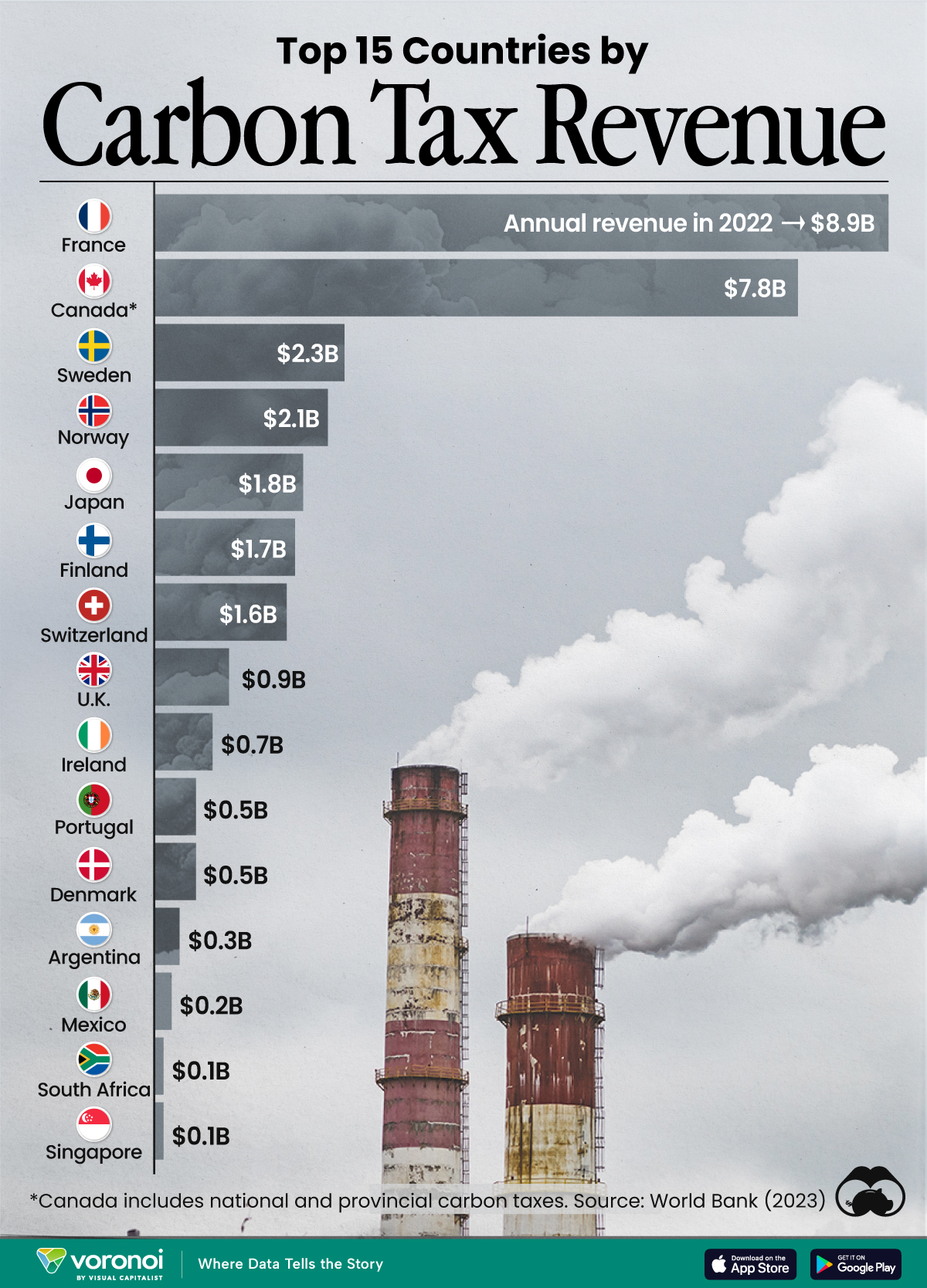Green
9 Things Cannabis Investors Should Know

9 Things Cannabis Investors Should Know
The swift regulatory changes taking place in the global cannabis sector are almost without modern precedent.
While some find the situation analogous to the repeal of Prohibition in the United States, it’s also fair to point out that such events happened 85 years ago in the midst of the Great Depression. It was a long time ago, and in a very different economic climate.
Today’s infographic comes to us from Evolve ETFs, and it shows what investors should know as the legal cannabis sector comes out of the dark.
What Cannabis Investors Should Know
Since there is so much happening at once with little precedent for what such a market will look like, it’s worth summing up the sector’s potential in broad strokes:
1. Global Size
According to research from The Brightfield Group, the size of the legal cannabis sector is expected to surge from $7.7 billion to $31.4 billion between 2017 and 2021.
Currently the recreational market makes up only 37% of the global total – but by 2021, that will rise to 57%.
2. Versatile Uses
Cannabis comes in different forms. One gram of dried cannabis is roughly equivalent to:
- 5g of fresh cannabis
- 15g of edible product
- 70g of liquid product
- 0.25g of concentrates
- 1 cannabis plant seed
These can be used in various medical applications, including to fight chronic pain, migraines, anxiety, multiple sclerosis, and nausea. Cannabis can also be used to treat Alzheimer’s, PTSD, and cancer.
3. North American Growth
By 2021, it’s estimated that North American sales will make up 86% of the global market. Specifically, the U.S. legal market is projected to hit $18.1 billion by that time, while the Canadian legal market is expected to be $8.9 billion in that same year.
4. A Shifting Legal Landscape
Canada will be the first G7 country to legalize cannabis at a federal level.
In the United States, recreational cannabis is already legalized in nine states – but this could change swiftly as various states undergo referendums.
5. European Markets
In 2017, the legal market for cannabis is estimated to be just $0.11 billion, but by 2021 it will have expanded to $3.8 billion.
According to The Brightfield Group, growth will be quite impressive in Western Europe: Germany’s market will grow at a 284% annual rate, the Netherlands at 364%, and Spain at 334%.
6. Rest of the World
Although markets outside of North America and Europe will not see the same growth in absolute dollar terms, the legal cannabis market will still expand from $80 million to $350 million, led by activity in Latin America.
7. Pharmaceutical Research
Israel has a special place in the cannabis world – the country is world leader in medical cannabis research, and industry expects that it will eventually translate into a $1 billion export opportunity. That said, export plans have hit a recent road bump.
8. Investment Activity
Compare the start of 2018 to that of 2017, and you’ll see an impressive difference in investment activity.
For this we use Canada with its impending recreational legalization as an example: in the first six weeks of 2018, investment was up nearly 7x over the previous year. Further, the average deal size increased from $5.6 million to $18.7 million.
Meanwhile, the Canadian Cannabis Index rose 201% between January 2017 and January 2018.
9. How to Invest?
There are a variety of ways to gain exposure to the sector, including:
- Licensed producer stocks
- Biotech stocks
- Ancillary services stocks
- Licensed retailer stocks
- Cannabis ETFs
Regardless of how you play it, the legal cannabis sector is coming out of the dark – and it will be interesting to see how the industry takes shape.
Green
Ranking the Top 15 Countries by Carbon Tax Revenue
This graphic highlights France and Canada as the global leaders when it comes to generating carbon tax revenue.

Top 15 Countries by Carbon Tax Revenue
This was originally posted on our Voronoi app. Download the app for free on iOS or Android and discover incredible data-driven charts from a variety of trusted sources.
Carbon taxes are designed to discourage CO2 emissions by increasing the cost of carbon-intensive activities and incentivizing the adoption of cleaner energy alternatives.
In this graphic we list the top 15 countries by carbon tax revenue as of 2022. The data is from the World Bank’s State and Trends of Carbon Pricing Report, published in April 2023.
France and Canada Lead in Global Carbon Tax Revenue
In 2022, the top 15 countries generated approximately $30 billion in revenue from carbon taxes.
France and Canada lead in this regard, accounting for over half of the total amount. Both countries have implemented comprehensive carbon pricing systems that cover a wide range of sectors, including transportation and industry, and they have set relatively high carbon tax rates.
| Country | Government revenue in 2022 ($ billions) |
|---|---|
| 🇫🇷 France | $8.9 |
| 🇨🇦 Canada | $7.8 |
| 🇸🇪 Sweden | $2.3 |
| 🇳🇴 Norway | $2.1 |
| 🇯🇵 Japan | $1.8 |
| 🇫🇮 Finland | $1.7 |
| 🇨🇭 Switzerland | $1.6 |
| 🇬🇧 United Kingdom | $0.9 |
| 🇮🇪 Ireland | $0.7 |
| 🇩🇰 Denmark | $0.5 |
| 🇵🇹 Portugal | $0.5 |
| 🇦🇷 Argentina | $0.3 |
| 🇲🇽 Mexico | $0.2 |
| 🇸🇬 Singapore | $0.1 |
| 🇿🇦 South Africa | $0.1 |
In Canada, the total carbon tax revenue includes both national and provincial taxes.
While carbon pricing has been recognized internationally as one of the more efficient mechanisms for reducing CO2 emissions, research is divided over what the global average carbon price should be to achieve the goals of the Paris Climate Agreement, which aims to limit global warming to 1.5–2°C by 2100 relative to pre-industrial levels.
A recent study has shown that carbon pricing must be supported by other policy measures and innovations. According to a report from Queen’s University, there is no feasible carbon pricing scenario that is high enough to limit emissions sufficiently to achieve anything below 2.4°C warming on its own.
-

 Markets2 weeks ago
Markets2 weeks agoVisualizing America’s Shortage of Affordable Homes
-

 Technology1 week ago
Technology1 week agoRanked: Semiconductor Companies by Industry Revenue Share
-

 Money1 week ago
Money1 week agoWhich States Have the Highest Minimum Wage in America?
-

 Real Estate1 week ago
Real Estate1 week agoRanked: The Most Valuable Housing Markets in America
-

 Business2 weeks ago
Business2 weeks agoCharted: Big Four Market Share by S&P 500 Audits
-

 AI2 weeks ago
AI2 weeks agoThe Stock Performance of U.S. Chipmakers So Far in 2024
-

 Automotive2 weeks ago
Automotive2 weeks agoAlmost Every EV Stock is Down After Q1 2024
-

 Money2 weeks ago
Money2 weeks agoWhere Does One U.S. Tax Dollar Go?













